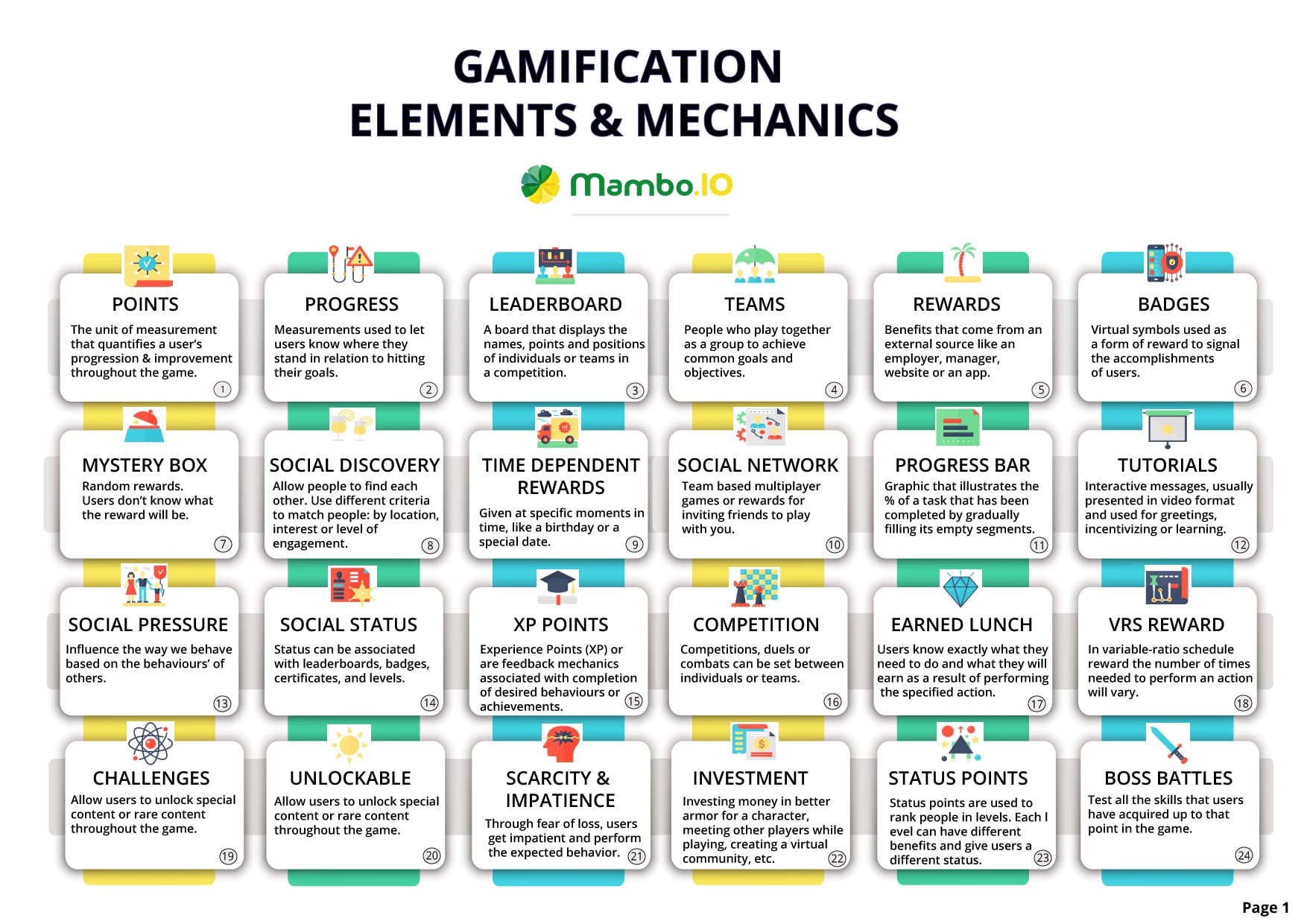What Is Competitive Landscape Analysis And How To Do It Right
An understanding of the competitive landscape has always been a key element of product management. It can lead to a plethora of advantages, after all, such as market validation, feature prioritisation, and better theory crafting. Despite this, some product managers tend to take it lightly, at least when compared to other responsibilities like backlog management.
Chances are you believe knowing who your competitors are is enough. But people tend to forget that the competitive landscape in any industry is more complex than you may think.
So, today, we will go over the idea of competitive landscape analysis. In particular, we will delve into why it’s so important and how you should go about it. But first, what does it entail?
Table of Contents
- What is competitive landscape analysis?
- Why is competitive landscape analysis important?
- How to conduct a competitive landscape analysis
- Wrapping up: competitive landscape
- Machine Learning In Finance: 12 Essential Applications
- How To Create Interactive Compliance Training For Bank Employees
- How Fintech Apps Are Using Gamification To Increase User Engagement
- Top Gamification Companies for Employee & Customer Engagement
What is competitive landscape analysis?
Competitive landscape analysis is the process in which you evaluate the competitive environment in which your business operates. In the case of product managers, it is when you evaluate the competitors of a product you’re currently developing.
It usually revolves around investigating competitors, so to speak, for information about them that may prove to be useful. Some common examples of such information are as follows:
- Who they are.
- Their offerings, including their products and services.
- Their strengths and weaknesses.
- The business strategy they use for marketing, talent acquisition, onboarding, and such. In your case, you would focus on their product ideation and development strategies.
- The overall market outlook.
Now, while some may argue that it’s only beneficial to the marketing or sales teams, that’s often not the case. For one, it typically offers benefits that align with your objectives.
Why is competitive landscape analysis important?
To put it into perspective, it would help to know that around 90% of Fortune 500 companies conduct competitive landscape analysis. This particular statistic highlights the significance of competitive analysis in successful companies and its contribution to their success.
Furthermore, in a survey, 69% of companies report positive results that have come from their decision to outsource their competitive intelligence department. This highlights how even with outside help, having a department dedicated to competitive analysis is beneficial.
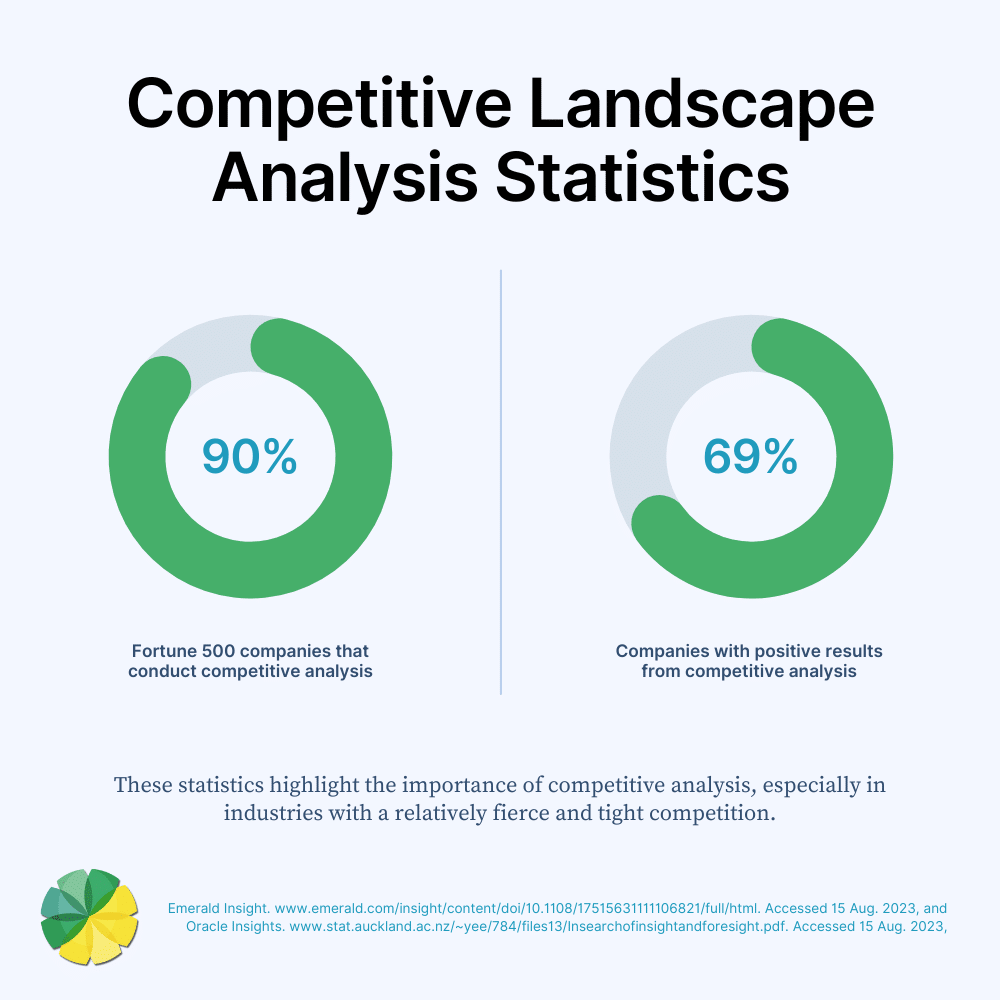
Of course, this data relates to all kinds of competitive landscape analysis, not just those by product managers. But even then, it should still yield benefits relevant to your department.
Consider the following points.
#1. Market validation
It is the product manager’s responsibility to evaluate whether there is currently a demand for the company’s products. It’s what decides whether the product would be a success, after all.
Not to mention product development typically requires a ton of investments. No company would want to invest in a product that is destined to fail due to a lack of market demand.
Competitive landscape analysis serves as a powerful tool to validate a product’s viability.
Example
Let’s say your company plans to create a social networking platform that revolves around sharing voice messages. It is to your understanding that voice messaging is more personal, and expressive. And as such, there might be a great demand that is currently not met by any brand.
However, before you start development, competitive landscape analysis yields these findings:
- The market for social networking platforms is already oversaturated with established players like Twitter, Facebook, and Instagram.
- Voice messaging is only popular in some cultural contexts, not to the general population.
- Upon investigating social networking platforms with voice messaging capabilities, you find that the usage of voice messaging is comparatively low.
These findings reveal that there’s a lack of market demand for this product idea. Hence, it would be in your best interest to scratch the idea, saving you from a large financial mistake.
#2. Differentiation and feature prioritisation
Any product manager would jump at a chance to lead the development of a product with unique features and capabilities. But of course, you should know that’s easier said than done.
Though it won’t make it easy, competitive landscape analysis will at least make it less difficult.
It does so by highlighting the features of existing products, essentially telling you what you should avoid. After all, you don’t want your product’s selling point to be the same as that of the established players in the market. But most importantly, it tells what they currently don’t have.
Example
Suppose you’re tasked with creating project management software for small businesses. Using competitive landscape analysis, you look into popular options like Trello and Asana.
You look into their customer reviews and feedback. In doing so, you realise that a pain point their users face is the lack of invoicing and time-tracking features. As a result, you decide to focus most of your team’s resources on the development of these two specific functionalities.
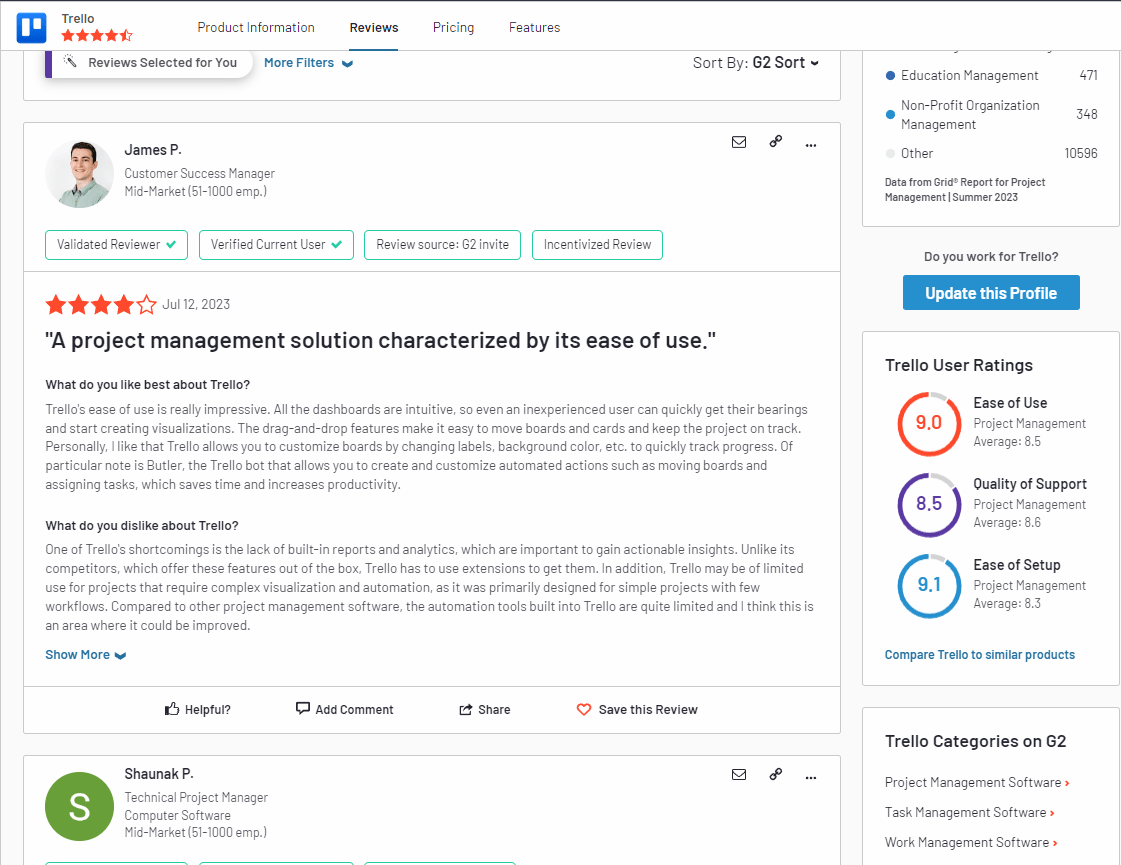
Source: G2
#3. Risk mitigation
It is common practice to add as many features to a product to see what sticks. Those that receive positive reception will stay, and those that don’t may get removed in the next iteration.
However, some features pose greater risks than most.
Perhaps it takes a considerable investment to add just a single feature. Maybe no one in the team is familiar with the technology, so it would be more time-exhaustive than usual.
The competitive landscape analysis process minimises such risks by looking at competitors that may have previously taken that risk.
Example
You are tasked to add augmented reality (AR) into an eCommerce platform to allow customers to try out items virtually. It’s an arduous task, so you decide to look into your competitors first.

Source: Shopify
In particular, you looked into competitors that tried to add AR technology in the past, such as Amazon and Sephora. You find that their customers commonly report their frustrations with the platform’s lacklustre AR rendering and accurate item sizing. As such, during development, you collaborate with the development team to ensure they steer clear of these issues.
#4. Adaptability
Becoming a leading brand for a specific type of product will always be rewarding. However, the competition doesn’t end there. Your competitor’s products are most likely being improved upon by a dedicated team even at this moment. While the same can be said for your products, sometimes, it’s difficult to come up with ideas, much less ones that you know will succeed.
That’s why there is a need to look into your competitors. To be precise, you can look into their success stories, such as when a feature they recently implemented has found success.
If something’s working for them, then chances are it’ll work for you. This is a common strategy that ensures long-term sustainability, making sure you stay on top of your game.
Example
Imagine you’re a product manager responsible for a gamified language-learning app.
Recently, you’ve heard that Duolingo implemented Duolingo Events where users can participate in live multiplayer trivia games. It has garnered the attention of many users and due to its competitive aspect, it was appreciated by the community. So, you decide to implement the same feature to gain a competitive advantage against other competing products.
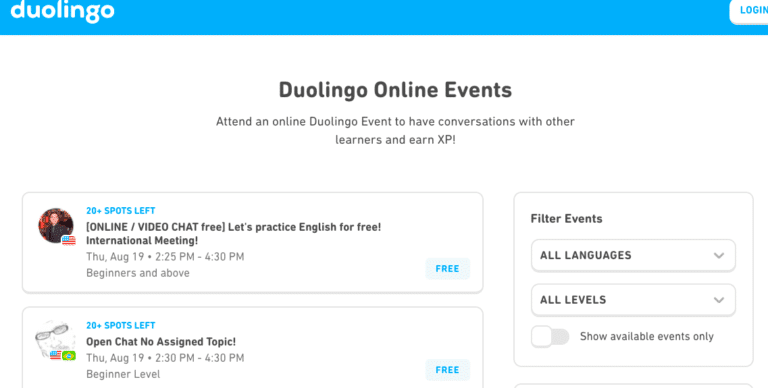
Source: Duolingo
If you’re interested in game-like elements, you don’t have to analyse competing brands. Our cheatsheet should be enough to brief you on the most common gamification elements.
Download your free
“108 Gamification Elements and Mechanics”
Get your cheat sheet and have a quick reference at your fingertips!
Needless to say, competitive analysis is a powerful tool for any product manager. It’s not only beneficial to the marketing department. But as always, you must work for such benefits.
That being said, read on to find out how to do competitive landscape analysis right.
How to conduct a competitive landscape analysis
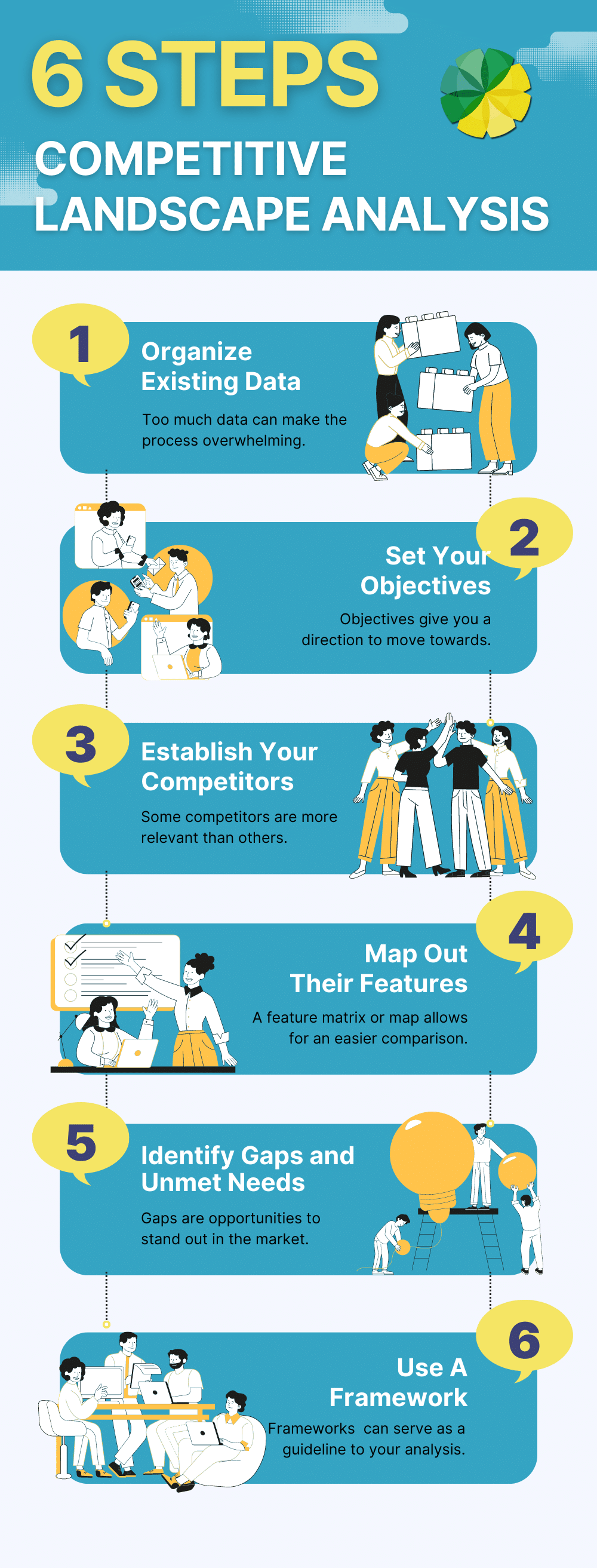
#1. Organise your existing data
Data is key to a successful competitive landscape analysis. But you must remember that simply having a lot of data will not be enough. It should also be organised and easy to access and use.
There have been one too many instances where teams are overloaded with data that it becomes detrimental rather than beneficial. With that said, before anything else, make sure your data is organised. Create a spreadsheet or use the software if necessary to achieve this.
Turning raw data into visuals should also help. Companies have found success in doing this through gamification, though, of course, you can take a different approach if you want.
#2. Set your objectives
You cannot conduct a single market research or analysis to cover the needs of the entire project. You can only cover so much ground, after all. For that reason, you mustn’t analyse with the intent to cover all your bases. Instead, you must focus on specific objectives.
Examples of objectives that you may set beforehand are as follows:
- Figure out market trends, such as new technologies or innovations that competitors are using for their products.
- Determine whether competing products may have missed some gaps or unmet needs.
- Identify promising features from competing products, as well as common issues as reported by their users. You can implement the former and steer clear of the latter.
#3. Establish your key competitors
There’s a good chance you already know who your competitors are.
However, there is a possibility of new players in the field. Perhaps a company has recently developed a product similar to yours. Maybe there have been changes in your old competitors.
It wouldn’t hurt to re-evaluate the market and “re-identify” your competitors.
But more importantly, you must establish what kind of competitor they are. It can vary from direct and indirect competitors or perceived and aspirational competitors.
Here’s a closer look at each classification.
Direct competitors
These are companies that sell similar products to the same target audience. These are brands your customers would choose from, along with yours, when purchasing.
Suppose you’re a company that offers app development services.
Example: Company A offers an app development service similar to yours. They primarily target small and medium-sized enterprises that seek custom mobile applications. Customers typically compare your company’s offerings with Company A’s when purchasing.
Indirect competitors
These are companies that sell a slightly different type of product but to the same target audience. In addition, their products also satisfy the same customer needs as yours.
Example: Company B specialises in web development and design services. They typically take commissions for developing responsive website applications. Though not directly in the app development niche, their target overlaps with yours since their offerings fulfil a similar need. Particularly, you both target businesses or enterprises that seek a digital presence.
Perceived competitors
These are companies that sell a fundamentally different type of product to a different audience that satisfies a different need. Despite these differences, however, the public typically views your company and theirs as competitors.
Example: Company C is a digital marketing firm for eCommerce businesses, offering to optimise user experiences. Despite the different offerings, people often consider Company C and your app development company as competitors in the digital transformation landscape.
Aspirational competitors
These are companies that you admire for a variety of reasons. It can be that you like how they approach marketing. Maybe you admire how they develop their products. These companies are typically something you model or want to model your business to due to their success.
Example: Company D is an established app development company. It is known for its user-centric design approach and innovative product launches. Your company admires their success and strives to achieve a similar level of excellence in delivering cutting-edge solutions.
The importance of your findings on each corresponding competitor would rely heavily on their classification. For instance, your findings on a direct competitor would naturally be of more use than your findings on an aspirational competitor.
#4. Map their features and functionalities
Normally, competitive landscape analysis involves assessing the content that your competitors produce. These may include their marketing materials, blog posts, and social media updates.
However, as you are focusing on their product, you should instead map out their features and functionalities. This means listing each and every feature their product or platform offers.
You might also want to consider categorising these features into core or additional features.
Regardless, with a list of features on hand, you can more easily figure out the features unique to your product. Those features would then serve as your main selling point to end-users.
Once you know your selling point, it’s only a matter of improving upon that feature. After all, it’s most likely the main reason why your users like your product, so why not improve it further?
You may have to do the following to completely map the features of a competing product:
- Check their website as they may have a page listing the features
- Read user reviews
- Use their product yourself
#5. Identify gaps and unmet needs
During step #4, you may stumble upon cases where you feel like the product is missing something. Maybe while you’re using a gamified language learning app, though it has a level system, you can’t see the progress. There’s no bar showing how soon you would level up. Perhaps you read a user review where they complain about the lack of timers in the app.
In this case, you have stumbled upon a gap—an opportunity to include a feature a competing product currently doesn’t have. Watch out for these and make sure to list them in your backlog.
#6. Use a competitive analysis framework
Though it may seem simple enough, it’s easy to get lost in your analysis due to the lack of organisation. You might veer off and investigate companies that aren’t relevant to your target market. Or you might include data or findings that aren’t relevant to your objectives at all. To avoid veering off your goals, it would help to use a competitive analysis framework.
Competitive analysis frameworks are basically a methodological and well-organised approach to understanding the competitive landscape. In short, they are a metaphorical guidebook.
Though there are more than a dozen competitive analysis frameworks out there, the most popular ones are as follows.
SWOT analysis
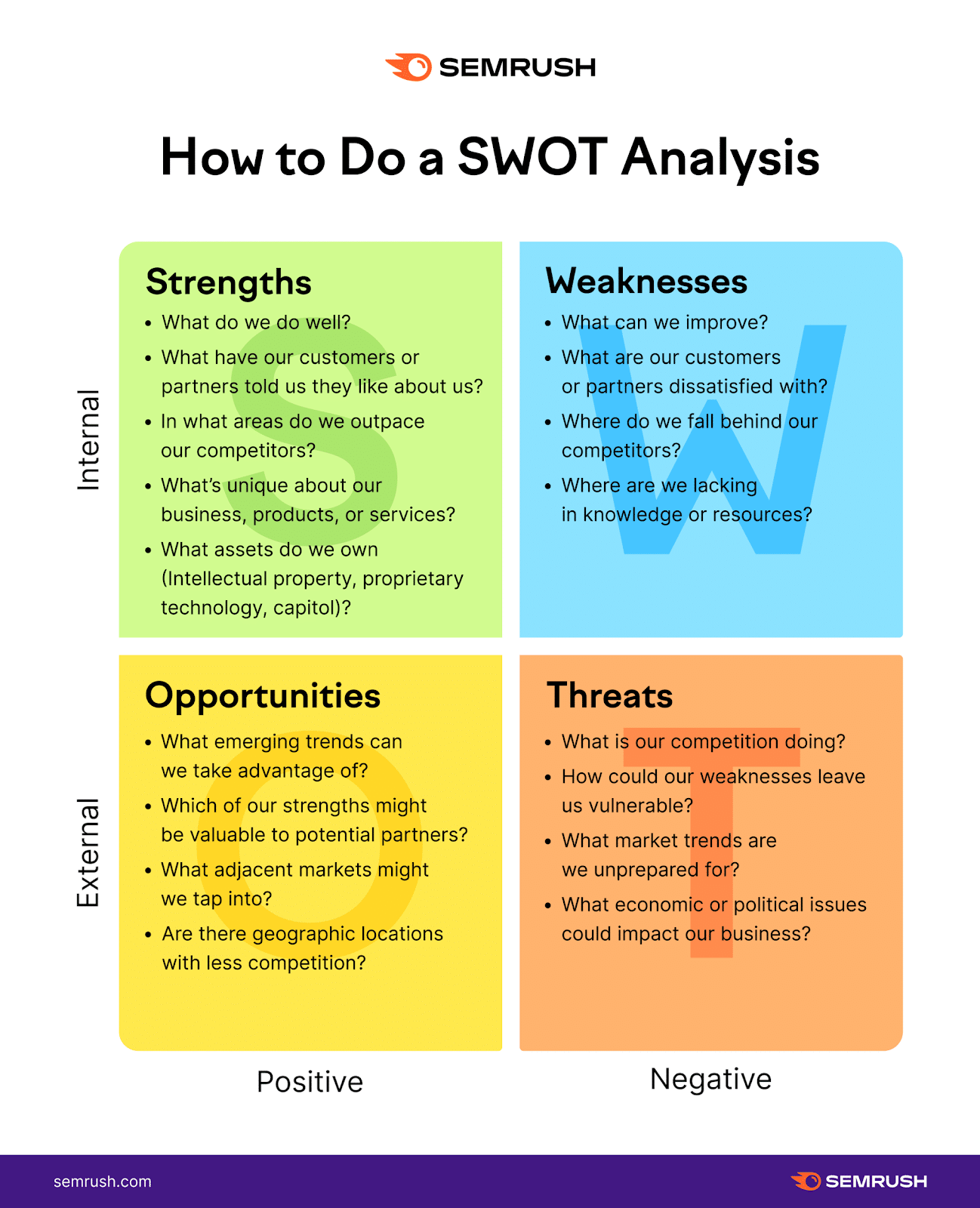
Source: Semrush
SWOT analysis stands for Strength-Weakness-Opportunities-Threats. It is a widely used framework that involves assessing these four aspects of a company. Though in your case, it would be about investigating the strengths and weaknesses of the competing product. SWOT analysis also tackles the opportunities for growth in said product, as well as issues to avoid.
Porter’s Five Forces
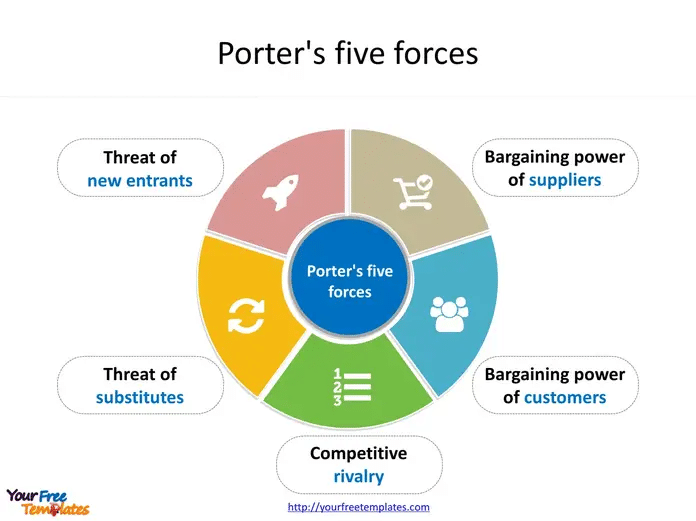
Source: YourFreeTemplates
Porter’s Five Forces is an analysis of the entire market rather than just a competitor. It helps you understand the dynamics of the competitors in the industry and their rivalry.
Competitor matrix
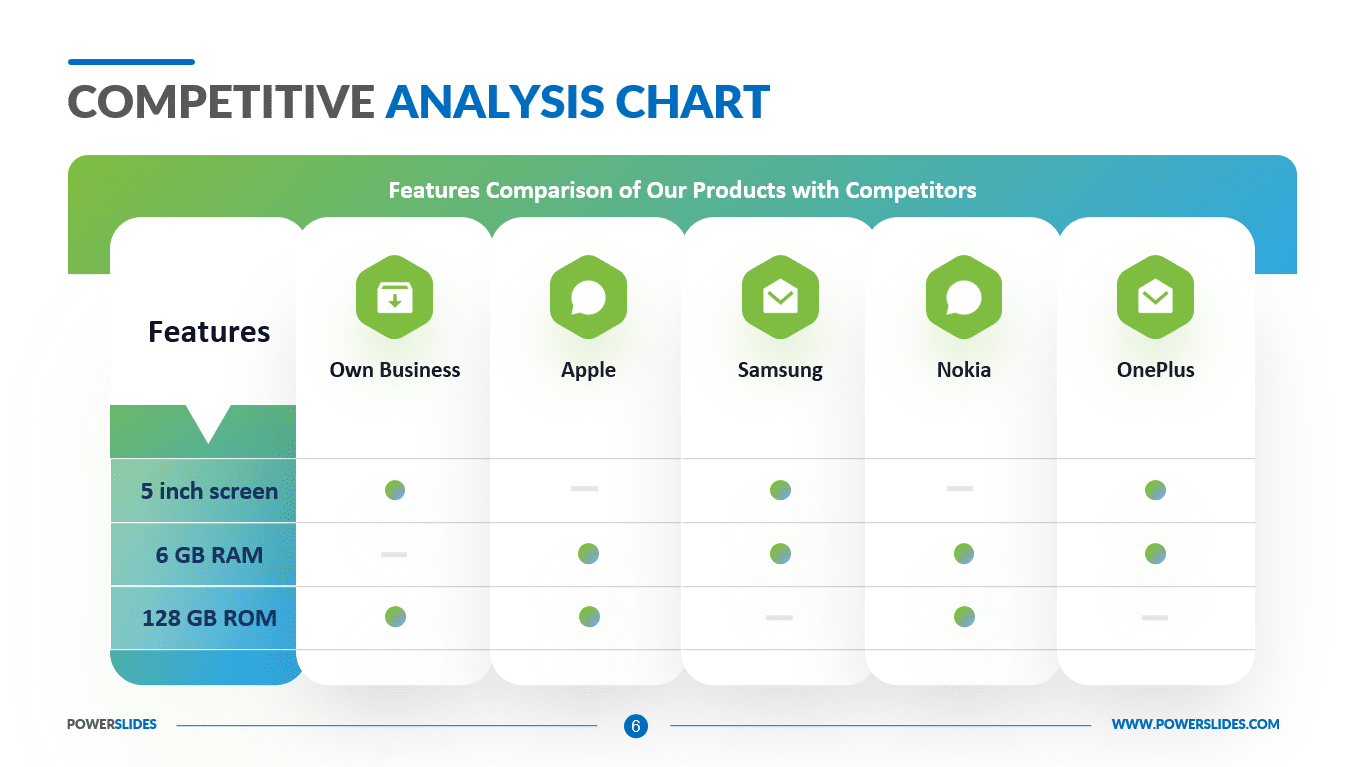
Source: PowerSlides
Competitor matrix is perhaps the most relevant to product managers. It’s a framework that revolves around creating a visual comparison between the attributes of your company and a competitor. But in this case, it would instead be a comparison of your product’s features.
Customer analysis
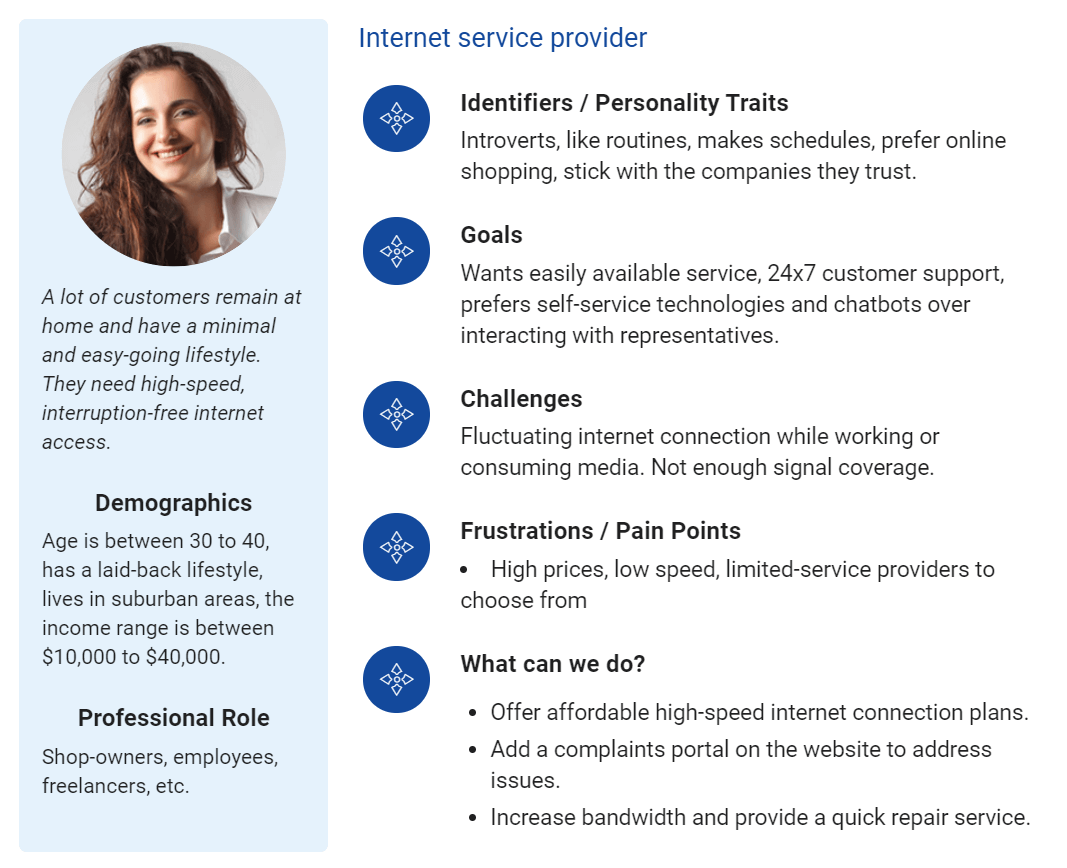
Source: upmetrics
Customer analysis is exactly as the name sounds. It involves understanding the user base of competing products, specifically, their preferences. This framework mostly guides you to the most suitable marketing strategy to effectively target your desired audience.
Wrapping up: competitive landscape
Whether you operate in an industry with fierce competition or not, a competitive landscape analysis is still crucial. After all, it does not only involve one-upping your competitors. It can also lead to the improvement of your product, independent from your competitors. At the end of the day, you can use your findings to create a product with more innovative features.
If you happen to be on the lookout for a feature to implement, gamification might be what you’ve been looking for. Book a demo with Mambo today and find out how it works.
Download your free
“Gamification Guide”
Get your PDF now and start transforming your approach to digital engagement!
Latest Posts
Machine Learning In Finance: 12 Essential Applications
The impact of machine learning on finance is significant. Thanks to this technology, financial institutions are now equipped to make efficient decisions. Through the analysis of data sets, machine learning […]
How To Create Interactive Compliance Training For Bank Employees
Banking compliance training isn’t just another task. It’s the stage where everything else performs. Banks must navigate a myriad of regulations and laws. After all, this is a trust-driven, high-stakes […]
How Fintech Apps Are Using Gamification To Increase User Engagement
Discover how gamification in fintech is revolutionizing financial engagement, making banking fun & boosting user loyalty.

